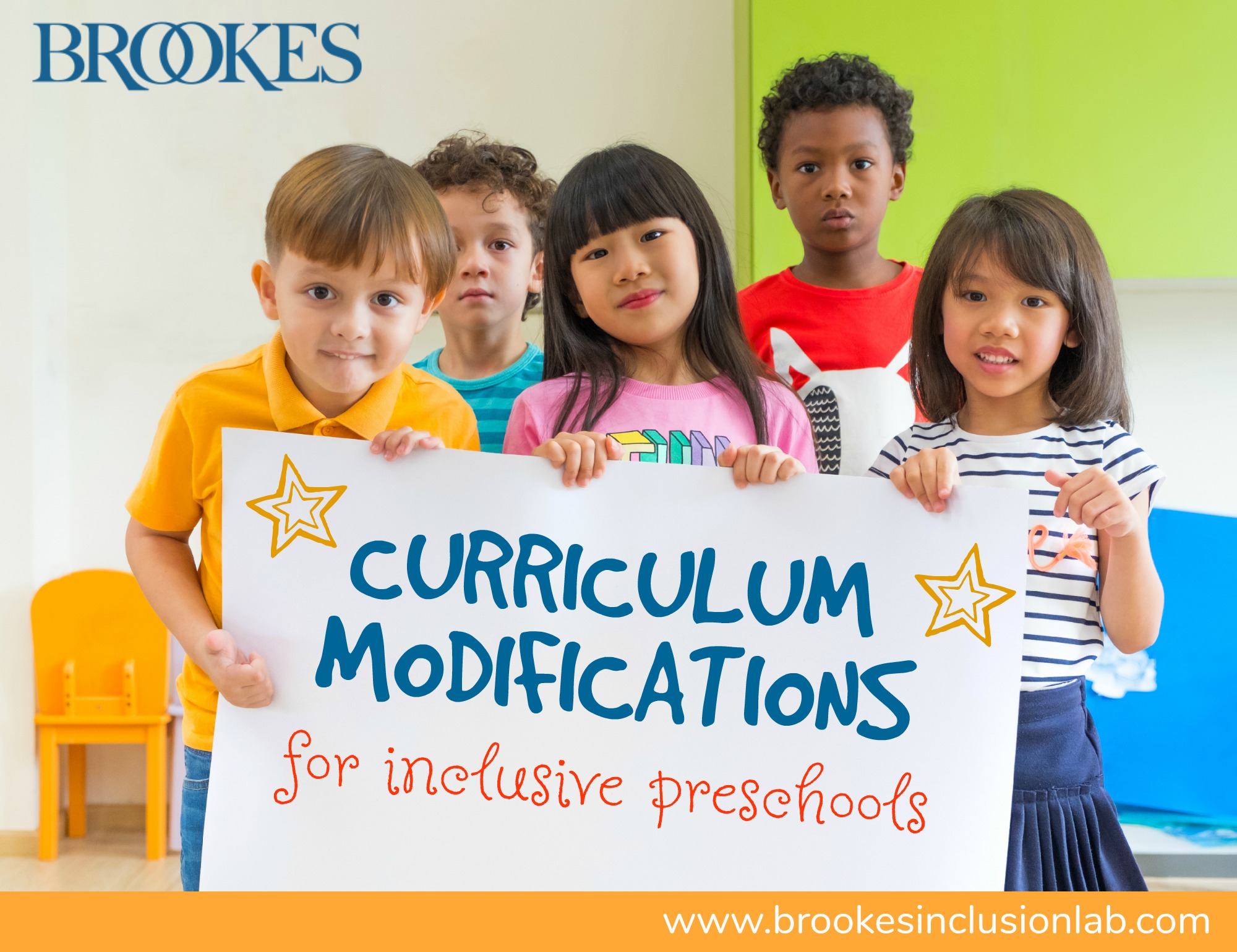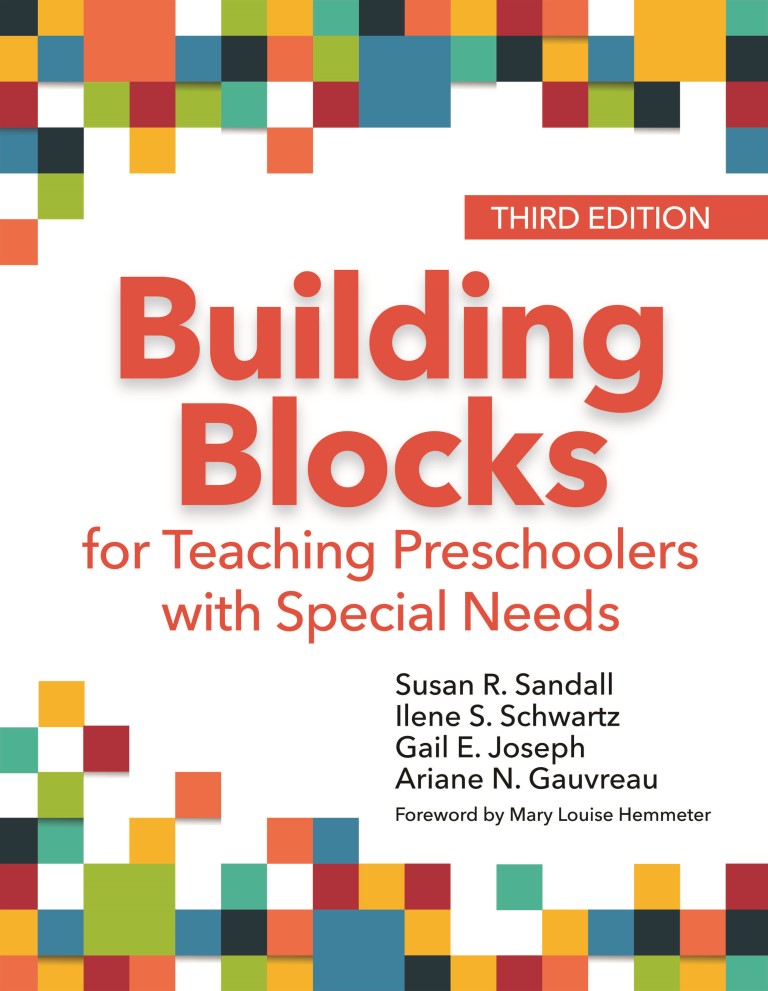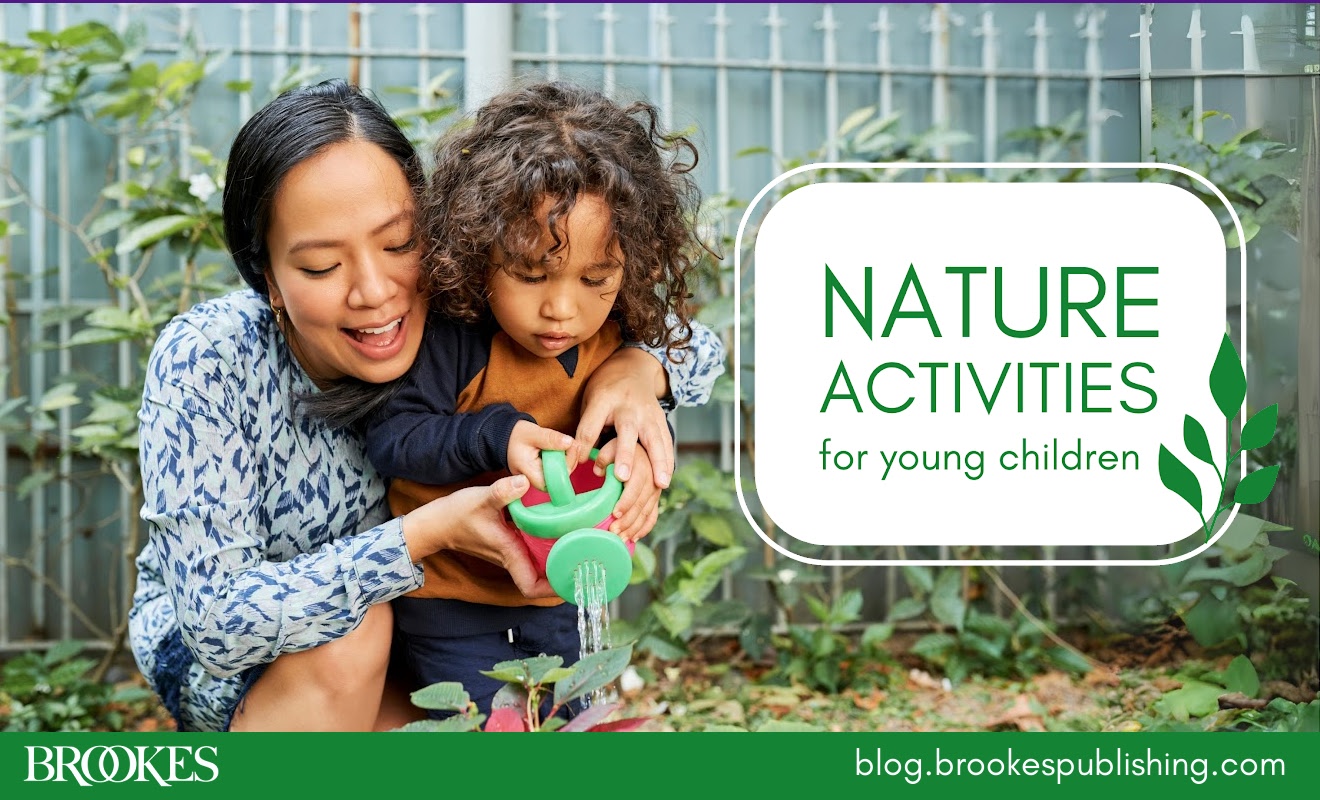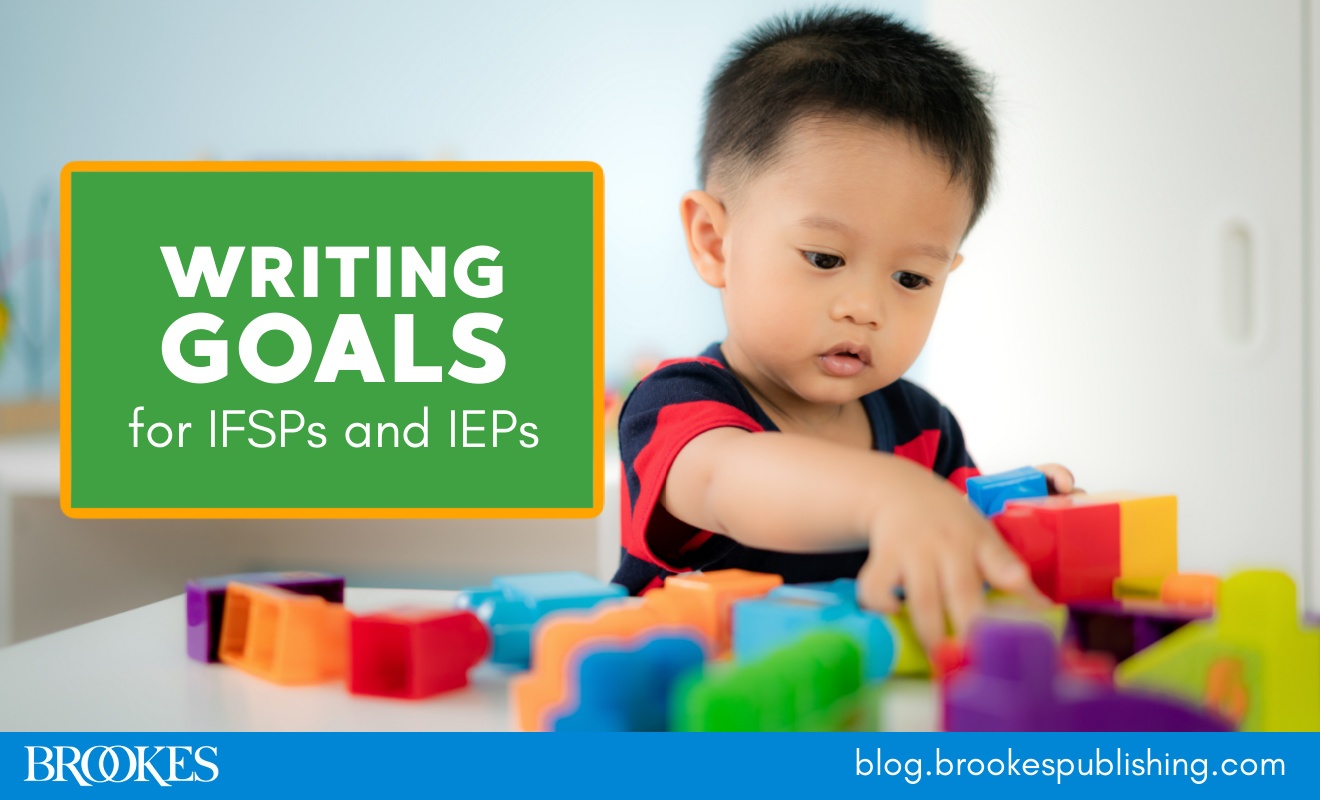9 Curriculum Modifications for Inclusive Early Ed Classrooms
April 24, 2019
 How can you teach and include every young learner in your inclusive early childhood classroom? Modifications are one way to meet the needs of every student—and today’s blog post brings you 9 practical ideas you can use and adapt for your own class. Excerpted and adapted from the new Building Blocks for Teaching Preschoolers with Special Needs, Third Edition, by Sandall, Schwartz, Joseph, & Gauvreau, these ideas are simple, low-cost ways to help all kids participate in everyday classroom routines and activities. Which ones have you tried in your classroom—and which ones might benefit the students you’re teaching right now?
How can you teach and include every young learner in your inclusive early childhood classroom? Modifications are one way to meet the needs of every student—and today’s blog post brings you 9 practical ideas you can use and adapt for your own class. Excerpted and adapted from the new Building Blocks for Teaching Preschoolers with Special Needs, Third Edition, by Sandall, Schwartz, Joseph, & Gauvreau, these ideas are simple, low-cost ways to help all kids participate in everyday classroom routines and activities. Which ones have you tried in your classroom—and which ones might benefit the students you’re teaching right now?
Break down tasks or activities into smaller, more manageable parts. Some children may be overwhelmed by multi-step activities such as cooking projects, craft projects, and table games. To reduce frustration and overload, break the activity into several smaller steps. Describe each step for the child in clear and simple terms. You can even draw pictures of the steps to make them clearer and easier to follow.
Stabilize materials using tape, Velcro, or nonskid backing. For example, if a child’s arm movements make the art paper slide off the table, tape the paper to the table. If a child seems to slip and slide on the wooden chairs in your classroom, attach bathtub appliqués or a section of a bathmat to the seat.
Make materials larger or brighter to attract attention and interest. For children who show little interest in art activities such as collage-making, slip pieces of Mylar or other shiny paper in the collage box. For children with visual impairments who have difficulty attending to objects or pictures, select pictures and books that are bold and uncluttered.
Incorporate a child’s favorite toy into a specific area or activity. This strategy can be especially useful for young learners who perseverate on one activity or have difficulty engaging in new activities. When this happens, try incorporating the child’s favorite toy into the area or activity you’d like them to try. For example, if a child loves trains and never goes to the dramatic play area, create a train station in the dramatic play area and have her play conductor. Or create a “fast-food restaurant” and use toy trains as the prize that comes with the kiddie meal.
Help children expand on and vary their play. Say a child repeats the same play actions over and over without making any changes—for example, a child at the sand table might dump and fill over and over without paying much attention to the effects of these actions. You might show the child another way to dump and fill, but make small alterations from the way the child currently plays. Hold the container up high while you dump it, or dump the contents through a funnel or short tube. Draw the child’s attention to what happens when you do these things.
Pair a child with a peer who can act as a helper. Peers can be great sources of support throughout the day. During the transition to the playground, pair a child who may struggle to follow directions with a partner who knows the routine and can help them follow the steps. During art projects, if a child has trouble putting paint on sponges to make sponge prints, ask another child at the table to help put the paint on. At cleanup time, if a child has difficulty lifting and putting the cover back on the sensory table, ask other children to help and make it a cooperative project.
Sequence turns to increase the likelihood of the child’s participation. For example, if a child is a reluctant talker during group activities, sequence the child’s turn to talk after another child who is especially talkative. This can give the reluctant talker some ideas about what to say or do. If a child lacks the hand strength to participate in a cooking activity that involves stirring or scooping, let the child take a turn after other children have stirred a bit or after another child has added liquid to the mixture. Or if the children are scooping out ice cream, let the child take a turn after the ice cream has melted a bit.
Switch up the social environment. If a child seems to have trouble playing near other classmates, try planning cooperative small-group activities with engaging and highly motivating materials. This will encourage the child to be close to peers while participating in fun activities such as murals and cooperative block structures.
Use special equipment to increase participation. Be aware of what supports your young learners may need and offer equipment that will help them participate in activities. For example, provide adaptive scissors that require less hand strength, a chair with sides or armrests to help with sitting balance, and adapted markers and paintbrushes with foam wrapped around them to make them easier to grasp.
Try these tips in your own early childhood classroom to meet diverse young learners’ needs. And for many more strategies on teaching and reaching all children…
EXPLORE THE BOOK
 Building Blocks for Teaching Preschoolers with Special Needs, Third Edition
Building Blocks for Teaching Preschoolers with Special Needs, Third Edition
By Susan R. Sandall, Ph.D., Ilene S. Schwartz, Ph.D., BCBA-D, Gail E. Joseph, Ph.D., & Ariane N. Gauvreau, Ph.D., BCBA-D
Packed with proven, ready-to-use tips and guidance, this new edition of the bestselling Building Blocks book gives you three types of practical, evidence-based inclusion strategies for pre-K classrooms: curriculum modifications, embedded learning opportunities, and child-focused instructional strategies. Includes 7 brand-new training modules and fresh guidance on UDL, literacy, STEAM, executive function, and more!
LEARN MORE NOW




Write a Comment
Your email address will not be published. Required fields are marked *
Post a Comment